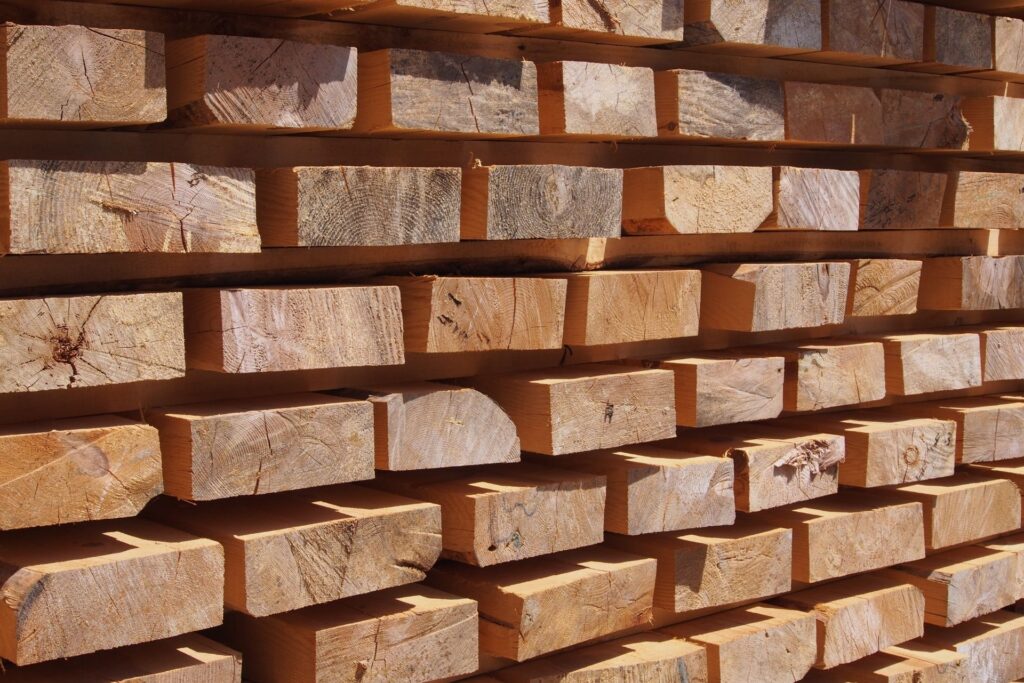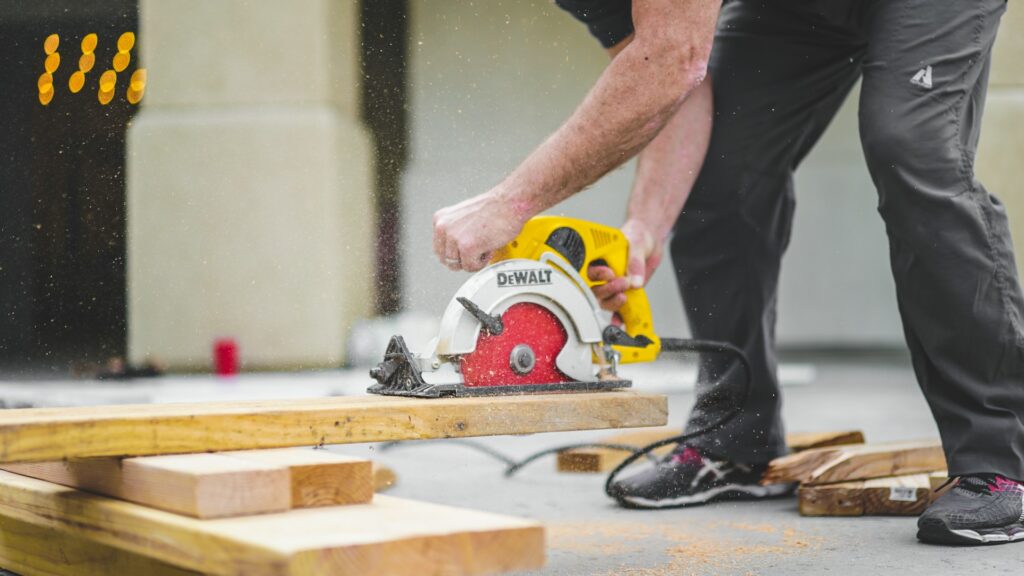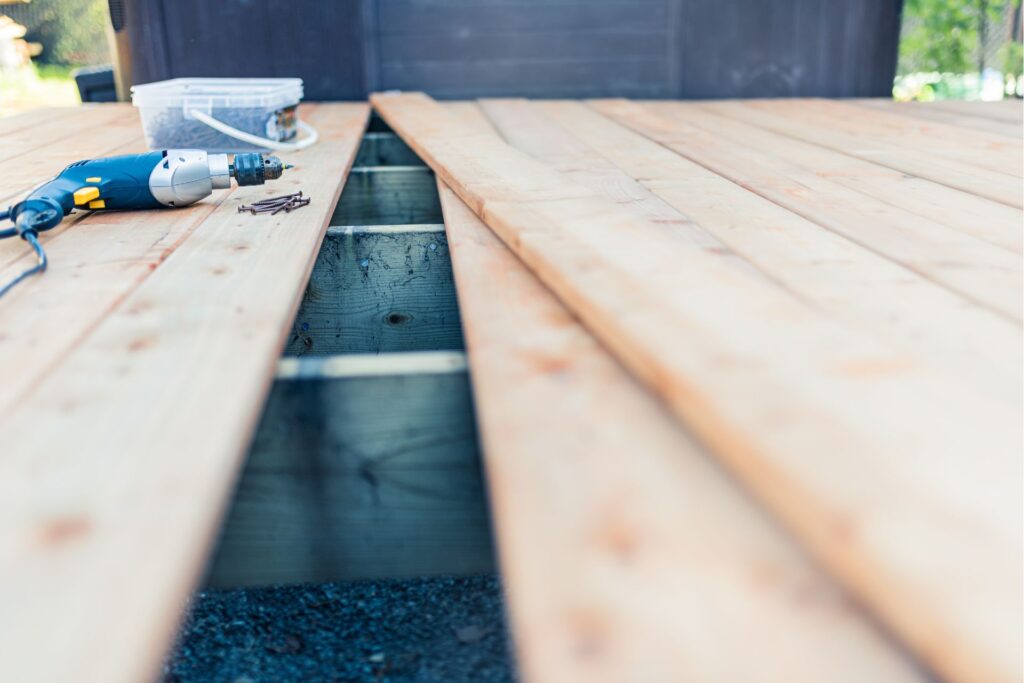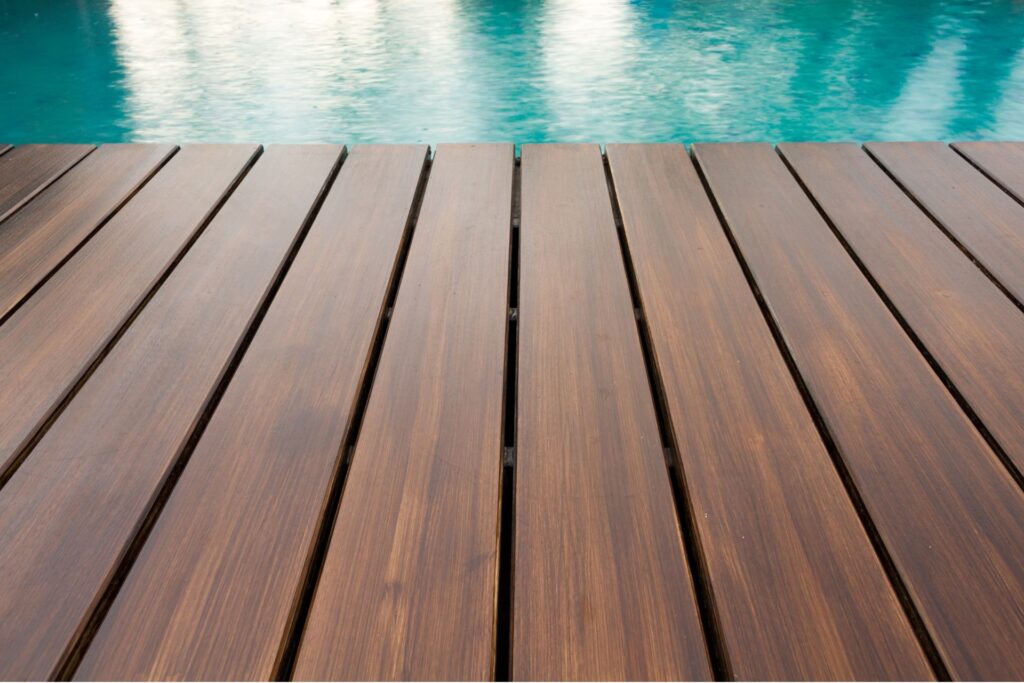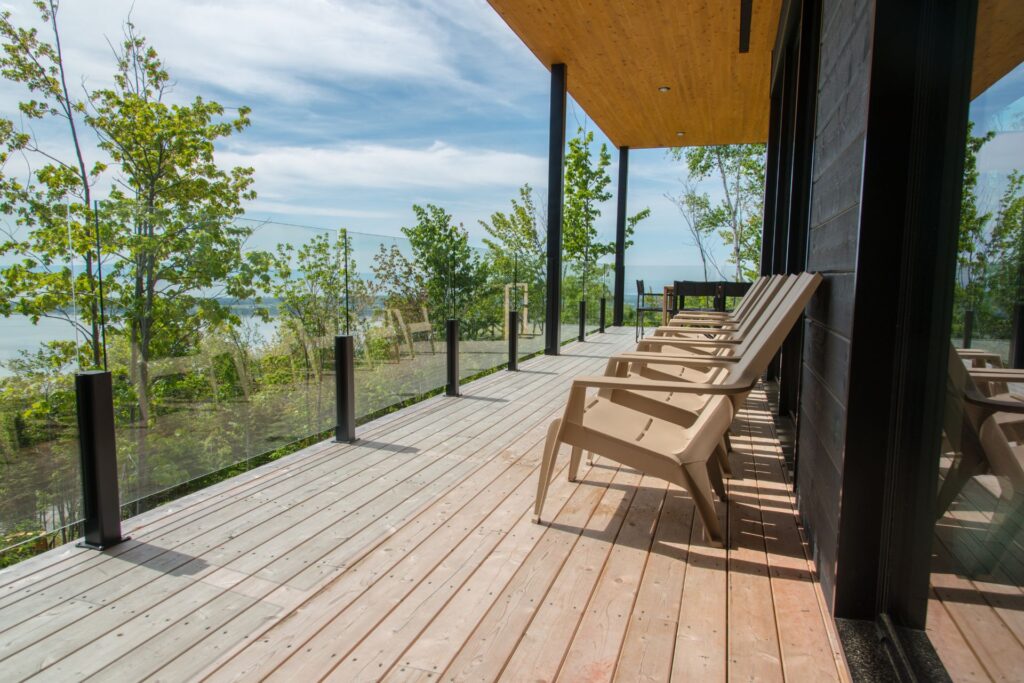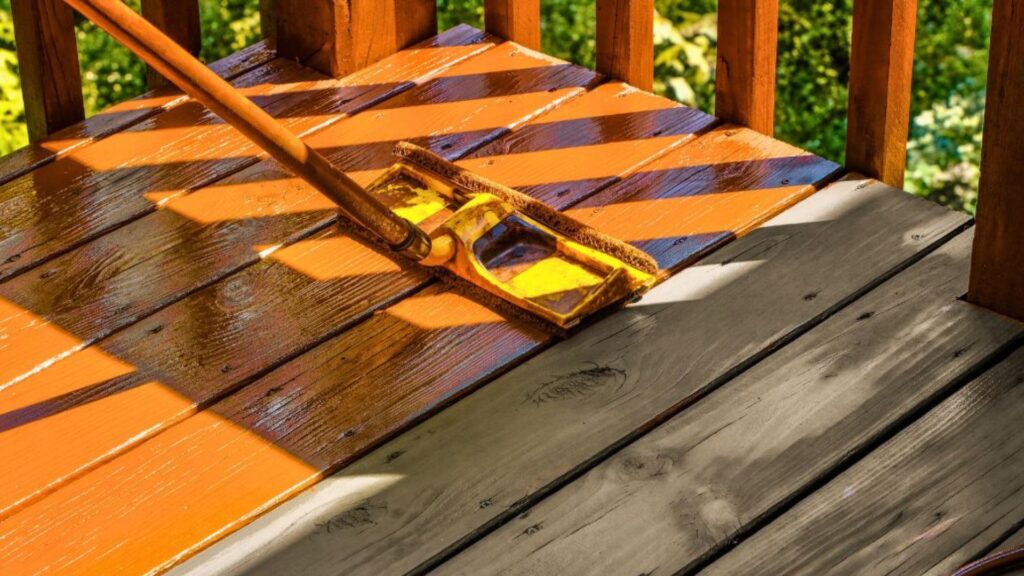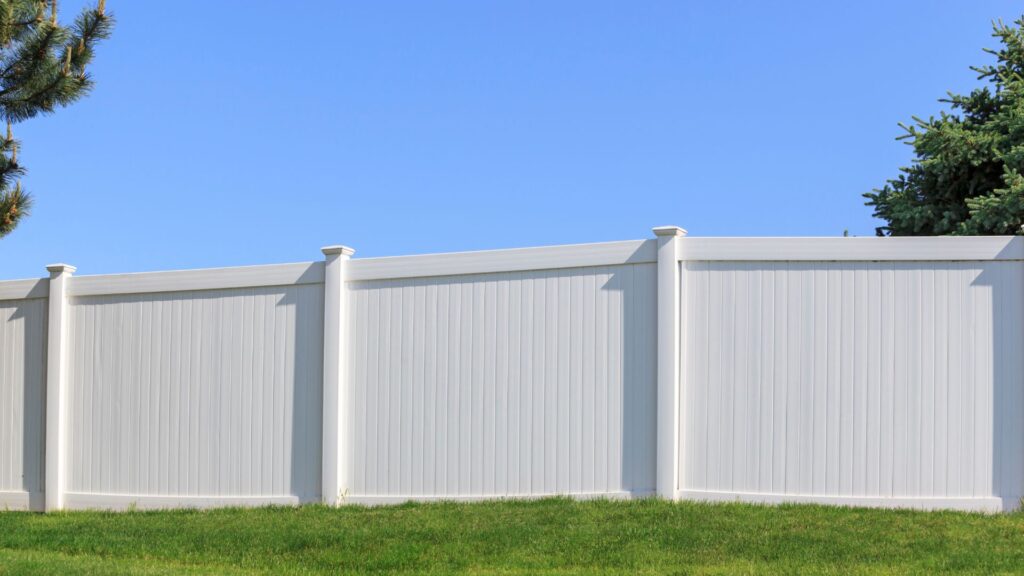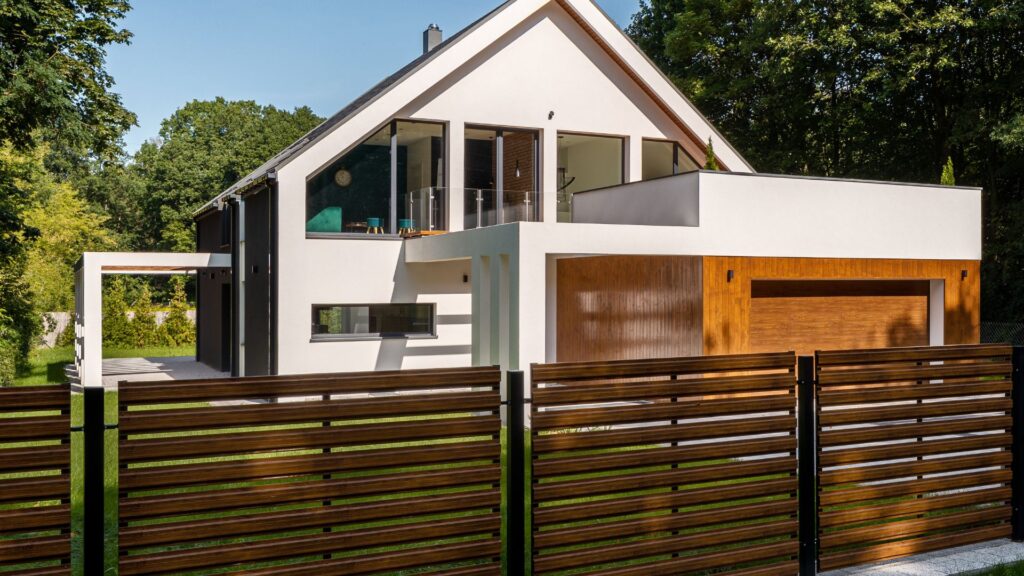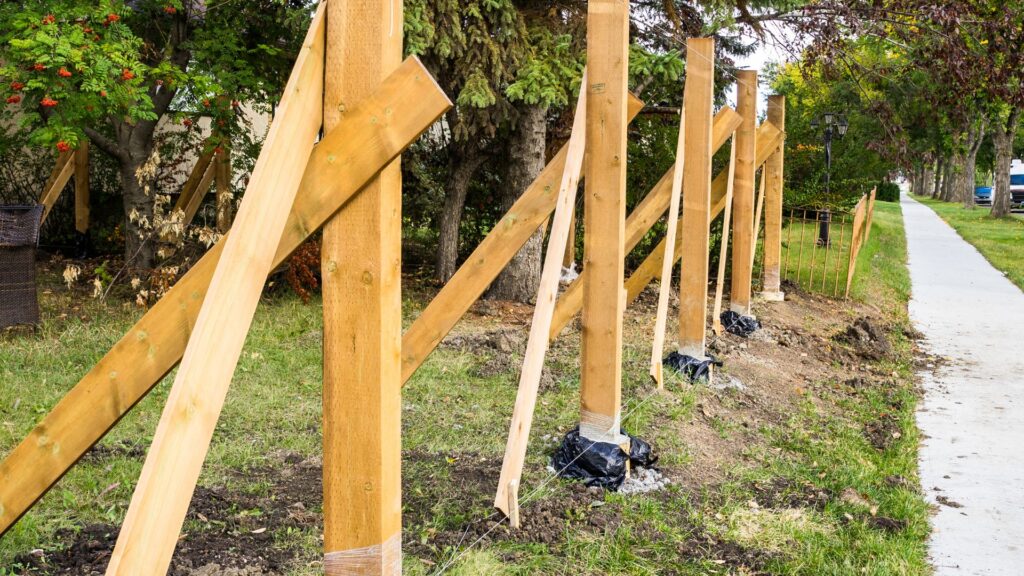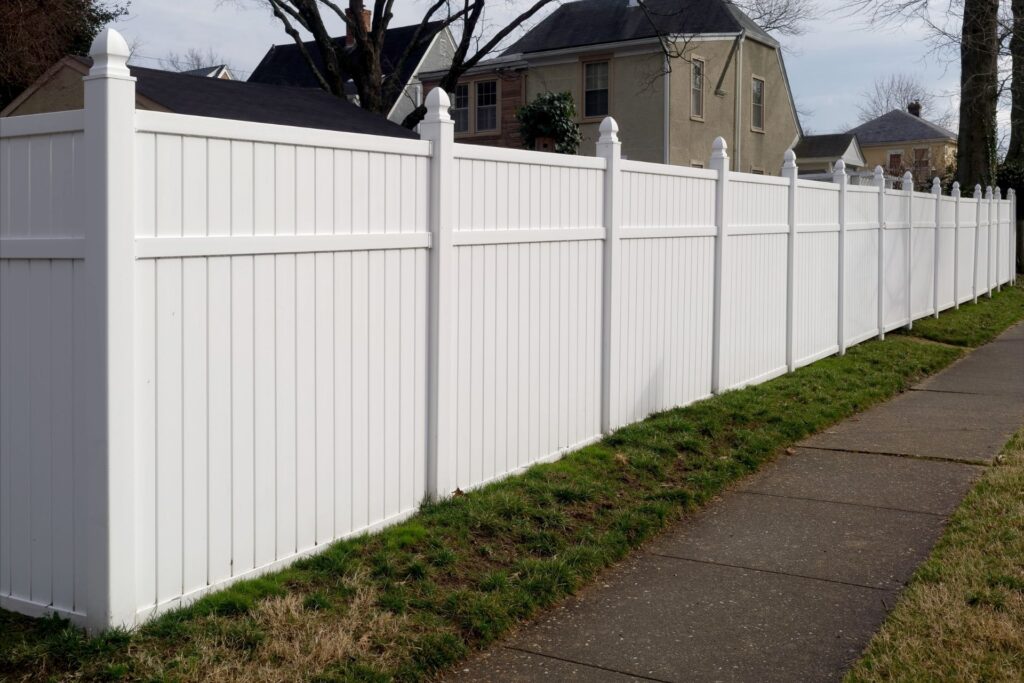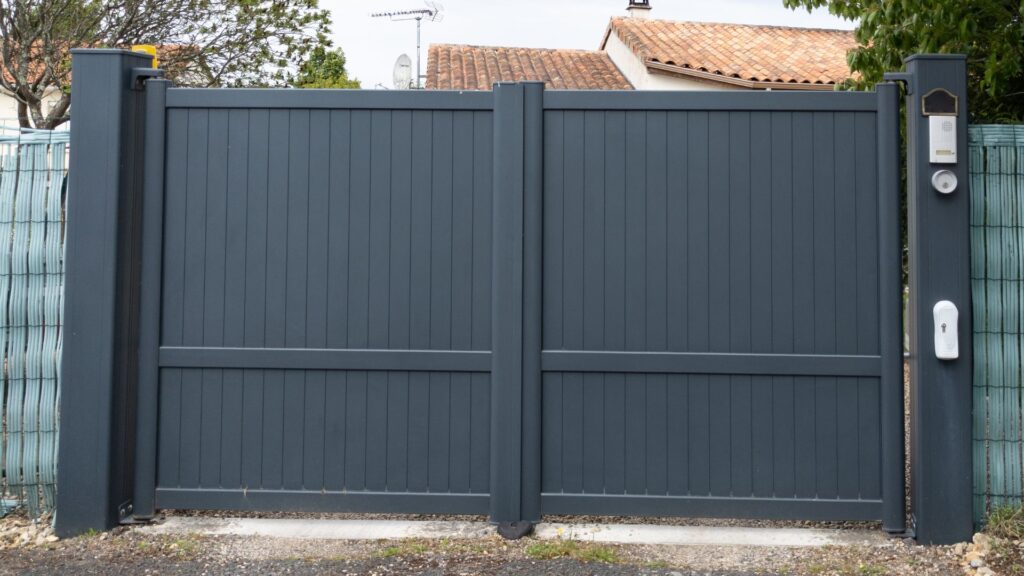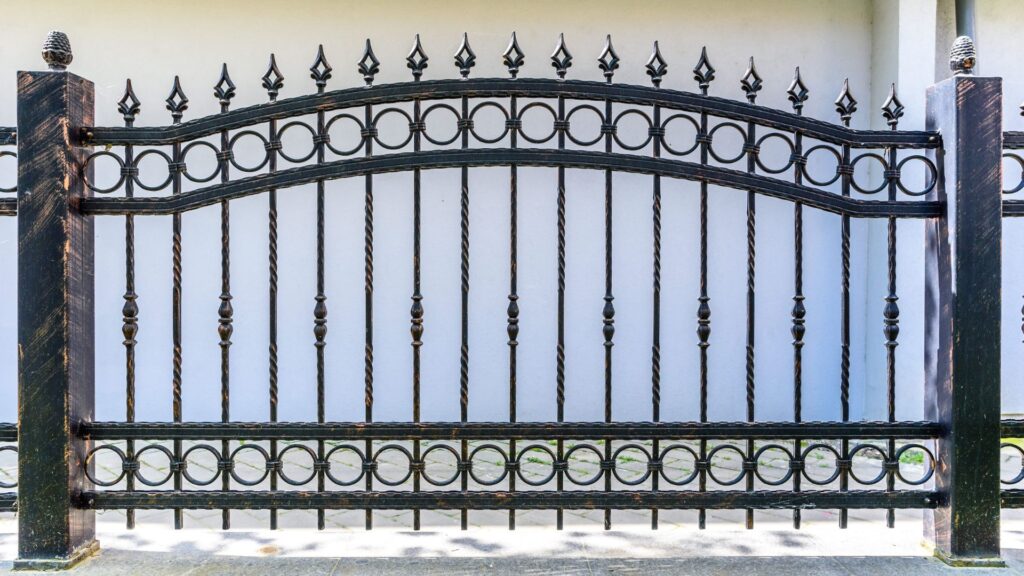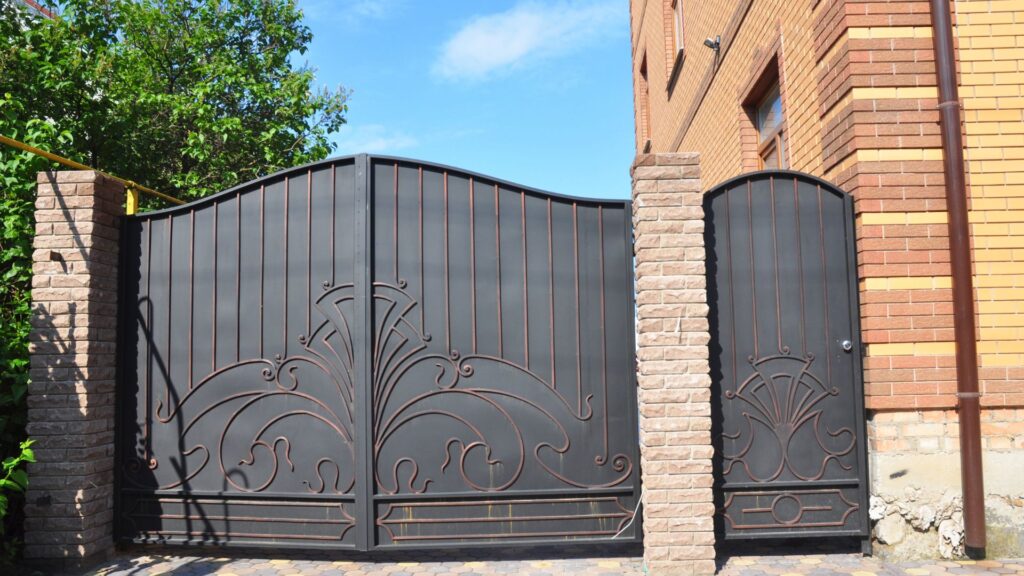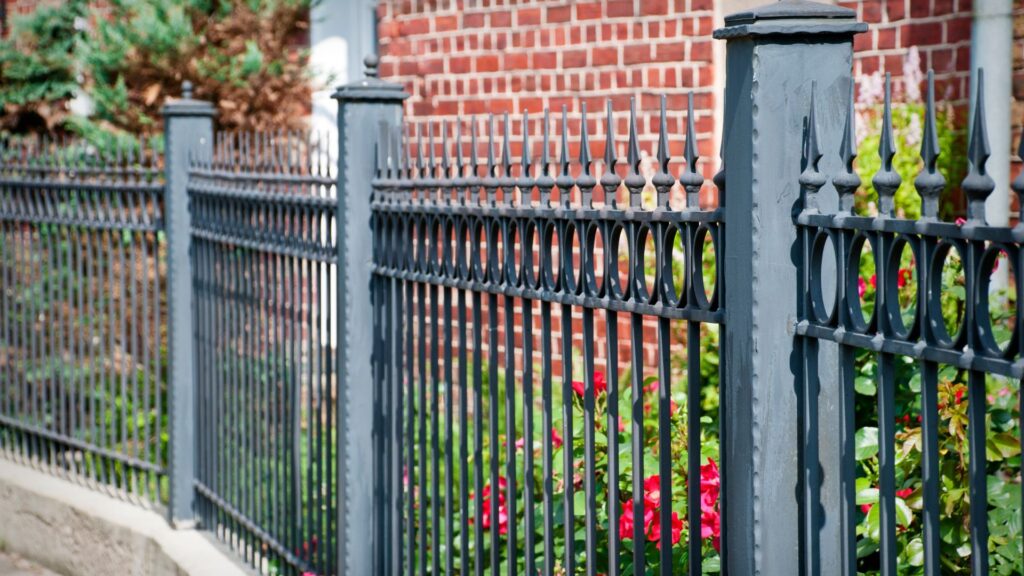Welcome to our comprehensive guide on choosing the cheapest decking timber in New Zealand! Whether you’re planning to build a new deck or replace an old one, selecting the right timber is crucial for both your budget and the longevity of your project. In this article, we’ll explore the most affordable decking timber options available in NZ, discuss their benefits and drawbacks, and provide practical tips to help you make an informed decision. From the widely popular pine to the durable eucalyptus, we’ll cover everything you need to know to find the best decking timber that fits your needs and budget. Let’s dive in and discover the perfect timber for your next decking project!
The cheapest decking timber in New Zealand includes options like pine, Macrocarpa, and eucalyptus. Pine is the most cost-effective choice, widely available, and easy to treat, making it ideal for budget-conscious homeowners. Macrocarpa offers natural resistance to rot and pests, while eucalyptus is valued for its durability and sustainability. Each type has its own advantages and considerations, ensuring you can find an affordable decking solution that meets your needs and preferences.
- Understanding Decking Timber In New Zealand
- Types Of Decking Timber Available In New Zealand
- Pine: The Most Affordable Decking Timber
- Macrocarpa: A Cost-Effective Alternative
- Eucalyptus: Affordable And Durable
- Other Affordable Decking Timbers
- Factors To Consider When Choosing The Cheapest Decking Timber
- Tips For Saving Money On Decking Timber
- Maintenance And Longevity: Getting The Most Out Of Your Decking Timber
- Real-Life Examples And Case Studies
- FAQs: About Cheapest Decking Timber NZ
- Conclusion
Understanding Decking Timber In New Zealand
Brief Explanation of Decking Timber
Decking timber is a popular material choice for constructing outdoor decks, patios, and other exterior structures. In New Zealand, timber decking is highly favored due to its natural aesthetic, durability, and versatility. Timber is available in various types, each offering unique characteristics suited for different climates and preferences. Commonly used decking timbers include Kwila, Pine, and Vitex. These timbers not only provide a sturdy and reliable surface but also enhance the visual appeal of outdoor spaces, making them more inviting and enjoyable.
Common Uses and Benefits of Decking in NZ Homes
Decking timber is extensively used in New Zealand homes for several reasons:
1. Outdoor Entertainment Areas: Timber decks are ideal for creating outdoor entertainment spaces, perfect for hosting barbecues, parties, or family gatherings. They provide a comfortable and attractive area to enjoy the outdoors.
2. Aesthetic Appeal: Timber decking adds a natural and warm look to homes. It complements various architectural styles, from traditional to modern, enhancing the overall aesthetic of the property.
3. Increased Property Value: A well-constructed deck can significantly increase the value of a home. Potential buyers often see a deck as an attractive feature, contributing to higher resale value.
4. Versatility: Timber decking can be used in various settings, including pool areas, gardens, and balconies. Its flexibility allows homeowners to customize their outdoor spaces to meet their specific needs and preferences.
5. Comfort and Safety: Timber decks offer a comfortable surface to walk on, even barefoot, and can be treated to be slip-resistant, enhancing safety for all family members, including children and the elderly.
Factors Influencing the Cost of Decking Timber
Several factors influence the cost of decking timber in New Zealand:
1. Type of Timber: Different types of timber come at varying price points. Premium hardwoods like Kwila and Vitex tend to be more expensive than softwoods like Pine. The choice of timber affects both the initial cost and the long-term maintenance expenses.
2. Quality and Grade: Higher-grade timbers, which are more aesthetically pleasing and durable, usually come at a higher cost. The grade of timber can affect its appearance, resistance to weathering, and lifespan.
3. Size and Design of the Deck: The overall cost will depend on the size of the deck and the complexity of its design. Larger decks and those with intricate designs or additional features (like built-in seating or railings) will require more materials and labor, increasing the total cost.
4. Installation Costs: Professional installation services add to the overall expense. The cost of labor can vary based on the contractor’s expertise, the project’s location, and the deck’s complexity.
5. Treatment and Maintenance: Some timbers require specific treatments to enhance their durability and resistance to pests and weather. These treatments, along with ongoing maintenance costs, such as sealing and staining, should be considered when budgeting for a decking project.
By understanding these factors, homeowners in New Zealand can make informed decisions about their decking projects, ensuring they choose the best timber for their needs and budget. This knowledge not only helps in planning but also contributes to creating beautiful, durable, and functional outdoor spaces.

Types Of Decking Timber Available In New Zealand
When it comes to selecting decking timber in New Zealand, homeowners and builders are spoiled for choice. The country’s unique climate and rich natural resources offer a variety of timber options, each with its own set of benefits. In this section, we’ll delve into the most popular types of decking timber, examining their durability, aesthetic appeal, and cost. We’ll also highlight some of the most affordable options to help you make an informed decision for your decking project.
Overview of Popular Types of Decking Timber
New Zealand’s timber industry is renowned for its high-quality, sustainably sourced wood. Here are some of the most popular types of decking timber you’ll find in the market:
1. Kwila (Merbau)
Durability: Highly durable and resistant to termites and decay.
Aesthetics: Rich reddish-brown color that weathers to a beautiful silver-grey.
Cost: Medium to high, reflecting its durability and aesthetic appeal.
2. Vitex
Durability: Durable and naturally resistant to decay.
Aesthetics: Attractive golden-brown color that ages gracefully.
Cost: Medium, a great balance between durability and cost.
3. Garapa
Durability: Known for its excellent resistance to rot and insect damage.
Aesthetics: Light yellow to golden brown, offering a bright and cheerful look.
Cost: Medium, providing good value for its durability and appearance.
4. Purpleheart
Durability: Extremely hard and dense, making it very durable.
Aesthetics: Unique purple hue that stands out among decking options.
Cost: High, due to its exceptional durability and distinct appearance.
Durability, Aesthetics, and Cost Considerations for Each Type
When choosing decking timber, it’s essential to balance durability, aesthetics, and cost. Here’s a closer look at these factors for the popular types mentioned:
Kwila (Merbau): Kwila is a favorite for its robustness and resistance to pests and decay. Its rich color adds warmth and sophistication to any outdoor space, making it a premium choice despite its higher cost.
Vitex: Vitex offers a beautiful blend of durability and aesthetic appeal. Its natural resistance to decay ensures longevity, while its golden-brown hue provides a timeless look. It’s a mid-range option that offers excellent value.
Garapa: Garapa stands out with its bright appearance and durability. It’s resistant to rot and insects, making it a reliable choice for decking. Its cost is relatively moderate, making it a practical choice for many homeowners.
Purpleheart: Known for its extraordinary durability and unique color, Purpleheart is a high-end decking material. Its dense nature ensures it withstands heavy use, while its striking purple shade makes a bold statement. The higher cost reflects its premium quality.
List and Description of the Cheapest Options
If you’re on a budget but still want a durable and attractive deck, consider these affordable timber options:
Pine
Durability: Treated pine is durable and resistant to termites and decay.
Aesthetics: Light color that can be stained or painted to suit any design.
Cost: Low, making it the most budget-friendly option for decking.
Macrocarpa
Durability: Naturally resistant to decay and does not require treatment.
Aesthetics: Warm, honey-colored wood with attractive grain patterns.
Cost: Low to medium, offering a balance between affordability and natural beauty.
Eucalyptus
Durability: Reasonably durable when properly treated.
Aesthetics: Rich, reddish-brown color that deepens with age.
Cost: Low, providing an affordable option with a premium look.
Other Affordable Options
Radiata Pine: Similar to treated pine, radiata pine is an economical choice, often used for budget-conscious projects.
Douglas Fir: Offers good durability and a pleasing appearance at a reasonable cost.
Tasmanian Oak: Though not as durable as hardwoods, it is a cost-effective choice for decking with proper treatment and maintenance.
In summary, New Zealand offers a diverse range of decking timbers to suit various tastes and budgets. Whether you’re looking for a luxurious finish with Kwila or a budget-friendly option with Pine, there’s a timber to meet your needs. Consider the durability, aesthetics, and cost of each type to choose the best timber for your decking project.

Pine: The Most Affordable Decking Timber
Detailed Look at Pine as a Decking Material
Pine is a popular choice for decking timber, especially in New Zealand. Its widespread use stems from its affordability and versatility. Typically, pine used for decking is treated to resist decay and insect attacks, ensuring it lasts longer in outdoor environments. This treatment process involves impregnating the wood with preservatives, making it more durable and suitable for various weather conditions. Pine’s light color also makes it a great option for staining, allowing homeowners to customize the look of their decks to match their aesthetic preferences.
Advantages of Using Pine
Cost-effectiveness
One of the most significant advantages of using pine for decking is its cost-effectiveness. Compared to other decking materials, pine is considerably more affordable. This affordability makes it an excellent option for homeowners looking to build a deck on a budget without compromising on quality. The lower price point of pine allows for more extensive decking projects, making it accessible for larger areas or more intricate designs.
Availability
Pine is one of the most widely available types of timber in New Zealand. Its abundance ensures a steady supply, which contributes to its affordability. The widespread availability also means that finding replacement boards or additional timber for expansions is relatively easy, ensuring consistency in the look and feel of the deck over time. This availability makes pine a convenient choice for both DIY enthusiasts and professional builders.
Ease of Treatment and Staining
Pine is known for its ease of treatment and staining. The wood’s porous nature allows it to absorb treatments and stains effectively, ensuring the preservatives penetrate deeply into the timber. This characteristic not only enhances the wood’s durability but also provides homeowners with flexibility in choosing the deck’s final appearance. Whether you prefer a natural look or a bold, vibrant color, pine can be stained to match your vision. Additionally, treated pine is less likely to warp or twist, maintaining the structural integrity of your deck over time.
Disadvantages of Using Pine
Susceptibility to Weathering
Despite its many advantages, pine is susceptible to weathering. Exposure to the elements can cause untreated pine to deteriorate quickly. Even treated pine, while more resistant, can show signs of wear over time, such as fading or surface cracking. To mitigate this, regular maintenance is essential. Applying sealants and protective finishes can help extend the life of your pine deck, protecting it from moisture, UV rays, and temperature fluctuations.
Maintenance Requirements
Pine decking requires more maintenance compared to some other materials. Regular cleaning, sealing, and staining are necessary to keep the wood looking its best and to protect it from the elements. Without proper maintenance, pine decks can become vulnerable to rot, mildew, and insect damage. Homeowners need to be prepared for the ongoing upkeep that comes with a pine deck. This maintenance includes periodic inspections to identify and address any issues early on, ensuring the deck remains safe and visually appealing.
In conclusion, pine is a highly affordable and widely available decking material that offers numerous benefits. Its ease of treatment and staining make it a versatile choice for homeowners looking to create a customized outdoor space. However, it is essential to be aware of its susceptibility to weathering and the maintenance required to keep it in top condition. By understanding both the advantages and disadvantages of pine decking, homeowners can make an informed decision that best suits their needs and budget.

Macrocarpa: A Cost-Effective Alternative
When it comes to choosing timber for your decking, Macrocarpa is an excellent option to consider. Known for its durability and unique aesthetic appeal, this timber stands out as a cost-effective alternative to more traditional choices.
Characteristics of Macrocarpa Timber
Macrocarpa, also known as Monterey Cypress, is a softwood that is highly regarded for its versatility and natural beauty. It originates from the Monterey Peninsula in California but has adapted well to New Zealand’s climate, making it a popular choice for various construction purposes.
1. Appearance: Macrocarpa timber is known for its distinct golden-yellow to light brown color, with occasional darker streaks. Its fine, even texture, and straight grain pattern add a unique character to any decking project.
2. Durability: Despite being a softwood, Macrocarpa is quite durable. It offers a reasonable resistance to decay and insect attack, which makes it a suitable option for outdoor use.
3. Workability: One of the appealing characteristics of Macrocarpa is its ease of workability. It can be easily cut, shaped, and finished, allowing for a smooth installation process.
Pros and Cons of Using Macrocarpa
Choosing the right timber for your decking involves weighing the benefits and drawbacks. Here’s a closer look at what Macrocarpa offers:
Pros
1. Natural Resistance to Rot and Pests: Macrocarpa possesses a natural resistance to rot and pests, which is a significant advantage for outdoor applications. This resistance reduces the need for chemical treatments, making it a more eco-friendly option.
2. Unique Appearance: The aesthetic appeal of Macrocarpa is undeniable. Its warm, golden hues and distinctive grain patterns can add a touch of elegance and uniqueness to your deck, enhancing the overall visual appeal of your outdoor space.
3. Cost-Effective: Compared to other premium timbers like Kwila or Teak, Macrocarpa is relatively affordable. This cost-effectiveness does not compromise quality, making it an attractive option for budget-conscious homeowners.
Cons
1. Softwood Limitations: As a softwood, Macrocarpa is not as hard as hardwoods like Kwila. It may be more susceptible to dents and scratches, which is something to consider if your deck will experience heavy foot traffic or frequent use.
2. Maintenance: While Macrocarpa is durable, it does require regular maintenance to keep it looking its best. Periodic sealing and staining are recommended to protect it from the elements and preserve its natural beauty.
Cost Comparison with Other Timbers
When planning a decking project, understanding the cost implications is crucial. Here’s a comparison of Macrocarpa with other popular decking timbers:
1. Macrocarpa: As mentioned, Macrocarpa is a cost-effective choice. On average, it is less expensive than many hardwoods, offering a budget-friendly option without sacrificing quality.
2. Kwila: Kwila is a popular hardwood known for its durability and rich color. However, it comes at a higher price point compared to Macrocarpa, making it less accessible for some homeowners.
3. Pine: Treated pine is often the cheapest option for decking. While affordable, it does not offer the same natural resistance to rot and pests as Macrocarpa, potentially leading to higher maintenance costs over time.
4. Teak: Teak is a premium hardwood with exceptional durability and weather resistance. Its high cost, however, makes it a luxury choice, significantly more expensive than Macrocarpa.
In summary, Macrocarpa offers a blend of affordability, durability, and aesthetic appeal, making it a compelling alternative for your decking needs. Its natural resistance to pests and rot, combined with its unique appearance, provides a practical yet attractive option for homeowners looking to enhance their outdoor spaces without breaking the bank.
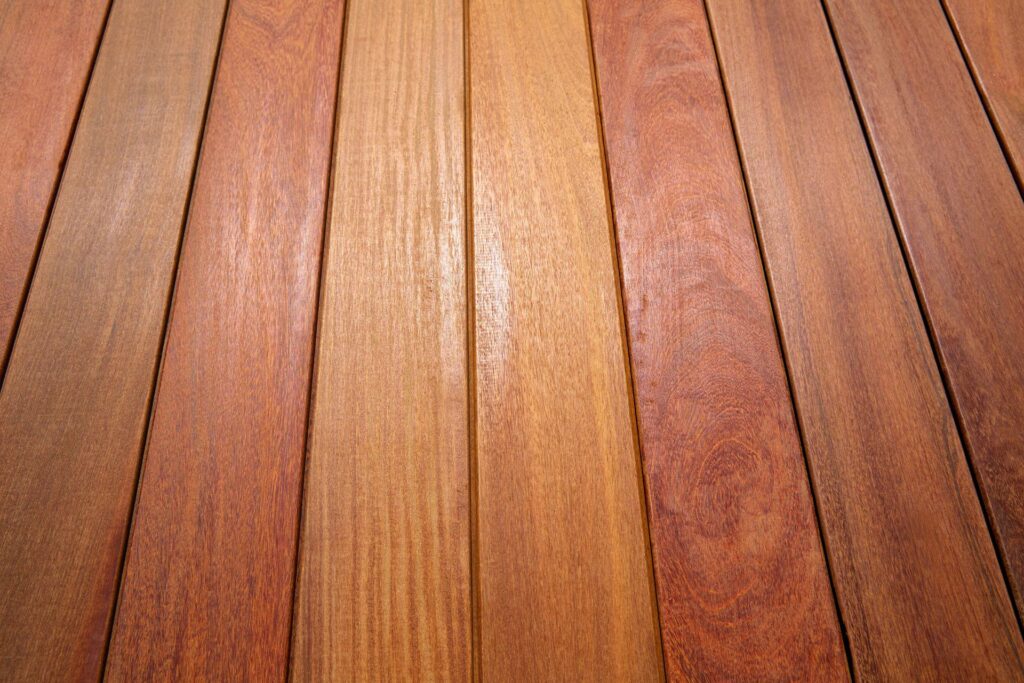
Eucalyptus: Affordable And Durable
Overview of Eucalyptus as a Decking Option
Eucalyptus is emerging as a popular choice for decking in New Zealand due to its affordability and impressive durability. Known for its robust properties, Eucalyptus timber is sourced from sustainably managed forests, making it an eco-friendly option for homeowners looking to enhance their outdoor spaces. This timber offers a beautiful, natural look that complements a variety of architectural styles, making it a versatile choice for any decking project.
Benefits of Eucalyptus Timber
Hardness and Durability
One of the standout features of Eucalyptus timber is its exceptional hardness and durability. Eucalyptus wood is naturally resistant to wear and tear, making it an ideal material for outdoor decking. Its dense grain structure provides excellent resistance to dents and scratches, ensuring your deck will maintain its pristine appearance for years. Additionally, Eucalyptus timber is resistant to insect attacks and decay, reducing the need for frequent repairs and replacements.
Environmental Sustainability
Eucalyptus timber is often harvested from sustainably managed plantations, ensuring a minimal environmental impact. These plantations are carefully monitored to promote biodiversity and soil health, making Eucalyptus a renewable resource. By choosing Eucalyptus decking, you are supporting environmentally responsible forestry practices and contributing to the preservation of natural ecosystems.
Potential Drawbacks
Availability in NZ
One of the challenges of choosing Eucalyptus for your decking project is its availability in New Zealand. While Eucalyptus is a popular timber globally, it might not be as readily available as other local hardwoods. This could lead to higher costs and longer wait times for sourcing the material. It’s essential to check with local suppliers and plan your project accordingly to ensure you have the necessary materials when you need them.
Maintenance Needs
Eucalyptus timber, like any natural wood, requires regular maintenance to keep it looking its best. While it is durable, it is still susceptible to the effects of weathering. Regular cleaning, sealing, and staining are necessary to protect the wood from moisture and UV damage. Neglecting these maintenance tasks can lead to a faded appearance and potential structural issues over time. However, with proper care, an Eucalyptus deck can retain its beauty and functionality for many years.
In conclusion, Eucalyptus is a compelling option for those seeking an affordable, durable, and sustainable decking material. Its natural hardness and resistance to environmental factors make it a reliable choice, while its eco-friendly credentials appeal to the environmentally conscious. However, potential buyers should consider the availability and maintenance requirements to make an informed decision that best suits their needs.
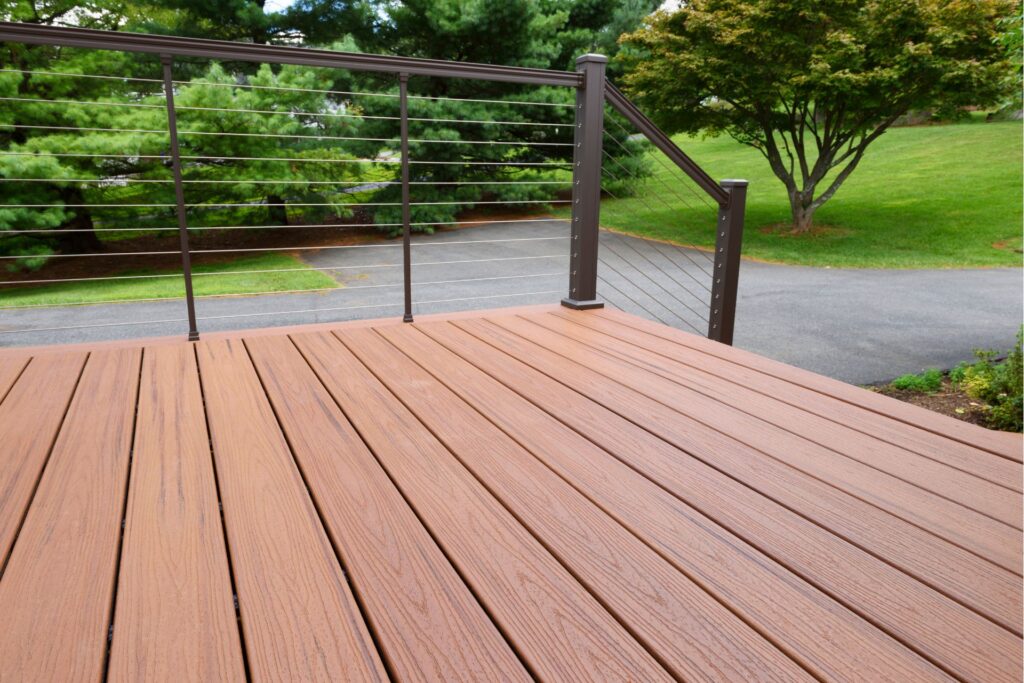
Other Affordable Decking Timbers
When considering decking materials for your outdoor space, exploring various affordable options can help you find the best balance between cost, aesthetics, and durability. Here are some other cost-effective decking timbers worth considering:
Pine
Pine is one of the most popular and budget-friendly choices for decking. Treated pine is resistant to termites and decay, making it a durable option for outdoor use. It is easy to work with, which simplifies the installation process. Pine also accepts paint and stain well, allowing you to customize its appearance to match your desired look.
Benefits:
- Affordable and widely available
- Easy to work with and install
- It can be painted or stained for a customized look
Drawbacks:
- Requires regular maintenance to preserve its appearance
- Softer wood, prone to dents and scratches
Douglas Fir
Douglas Fir is another economical choice for decking. It has a natural resistance to decay and insects, making it a good option for outdoor environments. Douglas Fir features a tight grain and minimal knots, giving it a clean and attractive appearance. It is also relatively strong and can withstand significant weight.
Benefits:
- Natural resistance to decay and insects
- Attractive appearance with tight grain and minimal knots
- Strong and durable
Drawbacks:
- Requires regular maintenance and sealing
- It can be more expensive than pine
Larch
Larch is a lesser-known but excellent option for decking. It is naturally resistant to rot and insect damage, and its high resin content helps it withstand harsh weather conditions. Larch has a unique and beautiful grain pattern, adding a rustic charm to any deck.
Benefits:
- Natural resistance to rot and insects
- High resin content for durability
- Attractive, rustic appearance
Drawbacks:
- It can be harder to find and slightly more expensive
- Requires periodic maintenance to maintain its appearance
Bamboo
Bamboo decking is an eco-friendly and affordable alternative to traditional timbers. It is highly renewable and has a rapid growth rate, making it a sustainable choice. Bamboo is incredibly strong and durable, often outperforming many hardwoods in terms of density and resistance to wear.
Benefits:
- Environmentally friendly and sustainable
- Strong and durable
- Unique and modern appearance
Drawbacks:
- Can be prone to moisture damage if not properly treated
- Requires specific maintenance to prevent weathering
Comparison of Features, Benefits, and Drawbacks
When comparing these affordable decking timbers, consider the following aspects to make an informed decision:
1. Durability: Treated pine and Douglas Fir offer good durability, but Larch and Bamboo stand out for their natural resistance to rot and insects. Pine, being softer, may not last as long under heavy use.
2. Maintenance: Pine requires the most maintenance, needing regular sealing and painting. Douglas Fir and Larch also need periodic maintenance, but Bamboo can require specific care to prevent moisture damage.
3. Aesthetics: Each timber has its unique look. Pine and Douglas Fir are versatile and can be customized with paint or stain. Larch offers a rustic charm with its grain pattern, while Bamboo provides a modern and sleek appearance.
4. Cost: Pine is the most budget-friendly option, followed by Douglas Fir. Larch and Bamboo can be more expensive but offer additional benefits like durability and aesthetics.
Choosing the right decking timber involves weighing these factors based on your priorities and the specific conditions of your outdoor space. By exploring these affordable options, you can create a beautiful, durable, and cost-effective deck that enhances your home’s outdoor living area.

Factors To Consider When Choosing The Cheapest Decking Timber
When you’re in the market for decking timber, finding the cheapest option can be tempting. However, several factors need to be weighed to ensure you make the best choice for your home and lifestyle. Here are the key considerations:
Cost vs. Durability
While the initial cost of decking timber is a significant factor, it’s crucial to think about the long-term durability of the material. Cheaper timbers might save you money upfront, but they can often require more frequent repairs or replacements. For instance, softwoods like pine are typically less expensive than hardwoods, but they may not withstand heavy foot traffic or harsh weather conditions as well. On the other hand, investing a bit more in a durable hardwood like Kwila or Vitex can result in a deck that lasts longer and stands up better to wear and tear, ultimately saving you money over time.
Maintenance Requirements
Different types of decking timber come with varying maintenance needs. Some cheaper timbers might require more intensive upkeep, such as regular sealing, staining, or even replacement of damaged boards. For example, untreated pine decking can be quite affordable but demands frequent maintenance to protect it from rot and insect damage. In contrast, timbers like cedar or composite materials might have a higher initial cost but need less frequent maintenance, making them more convenient and cost-effective in the long run. Consider how much time and effort you’re willing to invest in maintaining your deck when choosing your timber.
Environmental Impact
The environmental impact of your decking material is another important consideration. Look for timber that is sustainably sourced, with certifications like FSC (Forest Stewardship Council) ensuring the wood comes from responsibly managed forests. While reclaimed or recycled timbers can be cost-effective and eco-friendly options, they might require more preparation before use. Composite decking made from recycled materials is also an excellent choice for those looking to minimize their environmental footprint. Balancing cost with eco-conscious choices can help you make a more sustainable decision without compromising on quality.
Aesthetic Preferences
Your deck is an extension of your living space, so its appearance matters. Different types of timber offer various colors, grains, and finishes. For example, hardwoods like Kwila or Jarrah have rich, warm hues that can enhance the beauty of your outdoor area, whereas pine can be stained or painted to match your preferred aesthetic. Cheaper timbers might not offer the same natural beauty as more expensive options, but they can still be visually appealing with the right treatment and care. Consider what look you want for your deck and choose a timber that fits your style while staying within your budget.
Long-term Value
Ultimately, the cheapest decking timber might not always offer the best long-term value. Consider factors like longevity, maintenance costs, and the potential resale value of your home. Investing in a high-quality timber that requires less maintenance and offers greater durability can add significant value to your property. Moreover, a well-maintained, attractive deck can enhance your outdoor living experience, providing a space for relaxation and entertainment for years to come. Balancing your immediate budget constraints with the long-term benefits can help you make a more informed decision that will serve you well into the future.
By carefully considering these factors, you can choose the cheapest decking timber that meets your needs without sacrificing quality, appearance, or sustainability.

Tips For Saving Money On Decking Timber
When planning your decking project, one of the main concerns is often the cost of materials. Thankfully, there are several ways to save money on decking timber without compromising on quality. Here are some practical tips to help you get the best value for your investment.
How to Find the Best Deals and Discounts
Finding the best deals and discounts on decking timber requires a bit of research and patience. Start by visiting multiple suppliers and comparing prices. Don’t hesitate to ask about any ongoing promotions or upcoming sales. Sign up for newsletters from local hardware stores and timber suppliers; they often send out exclusive deals to their subscribers.
Online marketplaces can also be a great resource. Websites like Trade Me, Builderscrack, or local Facebook Marketplace groups often have listings for surplus timber at discounted rates. Additionally, keep an eye on clearance sections both online and in-store, where you might find high-quality timber at a fraction of the regular price.
Buying in Bulk vs. As-Needed
When it comes to purchasing decking timber, buying in bulk can lead to significant savings. Suppliers often offer discounts on large orders, so calculate your needs carefully and purchase accordingly. Bulk buying not only reduces the price per unit but also minimizes the number of trips you need to make, saving you time and transportation costs.
However, if your project is small or you have limited storage space, buying as-needed might be more practical. This approach also allows you to spread out your expenses over time. Carefully weigh the pros and cons of both options to determine which suits your project and budget best.
Seasonal Sales and Promotions
Taking advantage of seasonal sales and promotions is another effective way to save money on decking timber. Many suppliers offer significant discounts during off-peak seasons. For instance, purchasing timber during winter or early spring, before the prime building season starts, can yield substantial savings.
Holiday sales, end-of-financial-year clearances, and Black Friday deals are also excellent opportunities to get your timber at reduced prices. Plan your project timeline around these sales to maximize your savings.
Considerations for DIY Installation to Save on Costs
DIY installation is a great way to save money on your decking project, but it’s essential to be realistic about your skills and the time you can commit. If you have the necessary tools and a basic understanding of construction, building your deck yourself can significantly reduce labor costs.
Before starting, do thorough research. Watch tutorial videos, read guides, and if possible, seek advice from someone experienced in deck building. Ensure you have a detailed plan, including measurements and a list of required materials.
However, remember that a poorly installed deck can lead to higher costs in the long run due to potential repairs or even complete replacement. If you’re not confident in your abilities, it might be worth investing in professional help for at least the more complex aspects of the installation.
By following these tips, you can make your decking project more affordable while still achieving a high-quality, durable result. With careful planning and smart purchasing decisions, you can create a beautiful outdoor space that fits your budget.
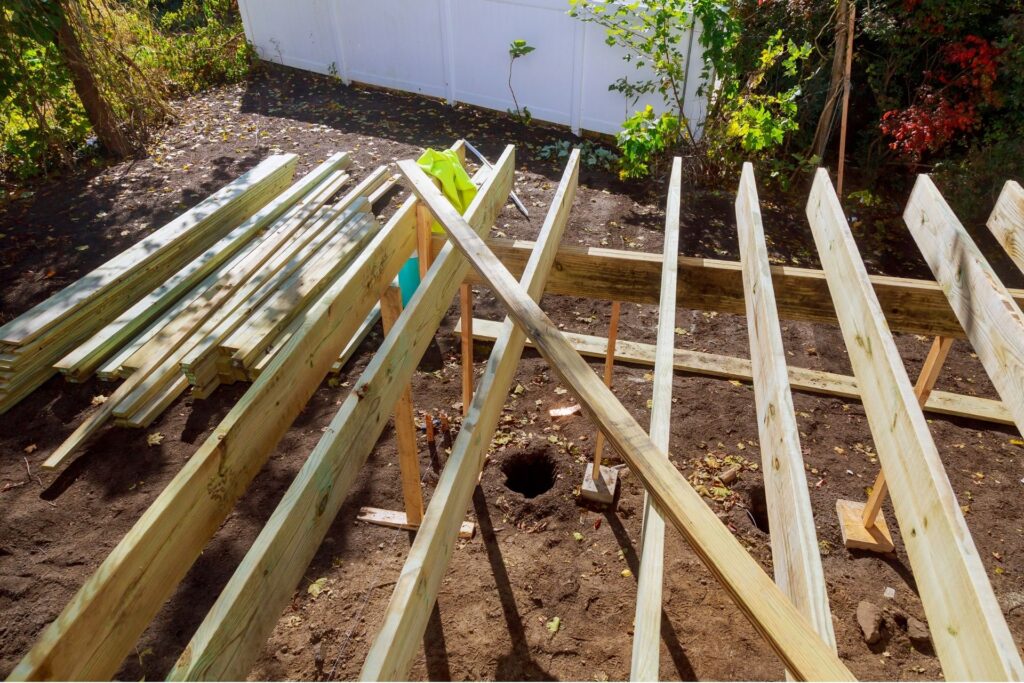
Maintenance And Longevity: Getting The Most Out Of Your Decking Timber
Investing in decking timber is a great way to enhance your outdoor living space, but to ensure that your investment lasts, proper maintenance and care are essential. Here are some practical tips to help you maintain and extend the life of your decking timber, focusing on cost-effective solutions.
Proper Care and Maintenance Tips for Cheap Decking Timber
Cheap decking timber can provide a beautiful and functional outdoor area, but it requires consistent care to maintain its appearance and durability. Here are some essential maintenance tips:
1. Regular Cleaning: Keep your decking timber clean by sweeping away leaves, dirt, and debris. This prevents mold and mildew growth, which can damage the wood over time. For a deeper clean, use a mild detergent mixed with water and a soft brush to scrub the surface. Avoid harsh chemicals that can strip the wood of its natural oils.
2. Sealing and Staining: Apply a quality sealant or stain to protect your decking timber from moisture, UV rays, and other environmental factors. Choose products specifically designed for the type of wood you have. Reapply the sealant or stain every 1-2 years, depending on the exposure and wear.
3. Preventing Water Damage: Ensure that your deck has proper drainage to prevent water from pooling on the surface. Standing water can lead to rot and decay. You can achieve this by installing a slight slope on the deck or using grooved decking boards.
4. Avoiding Scratches and Dents: Place protective pads under heavy furniture and avoid dragging items across the deck. Scratches and dents not only mar the appearance but can also expose the wood to moisture and pests.
5. Regular Inspections: Check your deck regularly for signs of damage, such as loose boards, nails, or screws, and address any issues promptly. Early intervention can prevent minor problems from becoming major repairs.
How to Extend the Life of Your Decking
To maximize the longevity of your decking timber, follow these additional tips:
1. Shade and Shelter: Install shading options like umbrellas, pergolas, or shade sails to protect your deck from the harsh sun. UV rays can cause the wood to fade and crack over time. Sheltering your deck can also shield it from rain and snow, reducing the risk of water damage.
2. Seasonal Maintenance: Adapt your maintenance routine to the seasons. In the fall, clear away fallen leaves to prevent staining and rot. In the winter, remove snow and ice promptly to avoid moisture damage. Spring and summer are ideal times for thorough cleaning and resealing.
3. Proper Ventilation: Ensure adequate ventilation beneath the deck to prevent moisture buildup. Good airflow helps to keep the wood dry and reduces the risk of mold and mildew.
4. Using Quality Fasteners: Invest in high-quality screws, nails, and other fasteners that are resistant to corrosion. Galvanized or stainless steel options are ideal as they do not rust, ensuring the structural integrity of your deck remains intact.
Cost-Effective Maintenance Solutions
Maintaining your decking timber doesn’t have to break the bank. Here are some budget-friendly maintenance solutions:
1. DIY Cleaning Solutions: Instead of purchasing expensive cleaners, make your own by mixing water with a small amount of dish soap or white vinegar. These solutions are effective in removing dirt and grime without harming the wood.
2. Natural Oil Treatments: Consider using natural oils like linseed or tung oil as a cost-effective alternative to commercial sealants. These oils penetrate the wood, providing protection against moisture while enhancing its natural beauty.
3. Local Suppliers: Purchase maintenance supplies from local suppliers who may offer discounts or promotions. Building a relationship with local vendors can lead to better prices and personalized advice.
4. Regular Light Maintenance: Performing light maintenance tasks regularly can prevent the need for costly repairs. Simple actions like tightening screws, cleaning spills promptly, and applying touch-up stains can go a long way in preserving your deck.
By following these tips and incorporating them into your regular home maintenance routine, you can enjoy a beautiful, durable deck for many years. Proper care and thoughtful upkeep will ensure that your decking timber remains a valuable and enjoyable part of your outdoor space.

Real-Life Examples And Case Studies
Short Case Studies of Homeowners Who Chose Affordable Decking Timber
Case Study 1: The Johnson Family
Background: The Johnson family wanted to extend their outdoor living space without breaking the bank. They opted for pine timber decking, a cost-effective choice widely available in New Zealand.
Experience: Initially, the Johnsons were concerned about the durability of pine compared to more expensive hardwood options. However, after consulting with a local decking specialist, they learned about proper maintenance techniques, such as regular sealing and staining, which significantly enhance the longevity of pine decking.
Costs: The total cost for their 30-square-meter deck, including materials and labor, came to $3,500. This was significantly lower than the $6,000 estimate they received for composite decking.
Satisfaction Levels: After a year of use, the Johnsons reported high satisfaction with their choice. They enjoyed the natural look of the timber and found the maintenance manageable.
Lessons Learned and Recommendations: The Johnsons recommend pine decking for budget-conscious homeowners willing to invest time in regular upkeep. They emphasize the importance of sealing the wood annually to prevent weather damage.
Case Study 2: The Martin Family
Background: The Martins wanted a new deck to host family gatherings and opted for macrocarpa timber due to its affordability and aesthetic appeal.
Experience: They appreciated macrocarpa’s natural resistance to insects and decay, which reduced their maintenance worries. The installation process was straightforward, and they completed the project in just two weekends with some help from friends.
Costs: Their 25-square-meter deck cost approximately $2,800, including DIY labor, which saved them additional expenses.
Satisfaction Levels: The Martins are thrilled with their deck. They love the rustic look of macrocarpa and find it comfortable underfoot, even during hot summer days.
Lessons Learned and Recommendations: The Martins advise others to consider macrocarpa for its natural resilience and lower maintenance needs. They recommend sourcing timber from reputable suppliers to ensure quality and longevity.
Case Study 3: The Singh Family
Background: The Singh family needed a deck for their new home and chose radiata pine for its affordability and widespread availability.
Experience: They found radiata pine easy to work with and appreciated its lightweight nature, which made the installation process smoother. With a clear stain finish, they achieved a beautiful, natural look that complemented their home’s aesthetic.
Costs: Their 20-square-meter deck cost $2,200, making it an economical choice that didn’t compromise on style.
Satisfaction Levels: The Singhs are very happy with their deck. They have used it extensively for entertaining and relaxation, finding it durable and visually pleasing.
Lessons Learned and Recommendations: They recommend radiata pine for those looking for an affordable yet attractive decking option. They highlight the importance of regular cleaning and staining to maintain its appearance and durability.
Lessons Learned and Recommendations
Through these case studies, several key lessons emerge:
1. Maintenance Matters: Regardless of the type of timber chosen, proper maintenance is crucial. Regular cleaning, sealing, and staining can significantly extend the life and appearance of affordable decking timber.
2. DIY Can Save Costs: Homeowners willing to undertake some or all of the installation themselves can save a substantial amount on labor costs. However, it’s important to have a clear plan and the necessary tools and skills.
3. Choose Reputable Suppliers: Purchasing timber from reputable suppliers ensures better quality and longevity. This is particularly important for cheaper timber options, where the quality can vary widely.
4. Consider Environmental Conditions: Different types of timber perform better in various environmental conditions. Homeowners should consider local climate and exposure to the elements when selecting their decking material.
These real-life examples demonstrate that affordable decking timber can provide beautiful, functional outdoor spaces without compromising on quality or satisfaction. By following these lessons and recommendations, homeowners can achieve the best results for their decking projects.
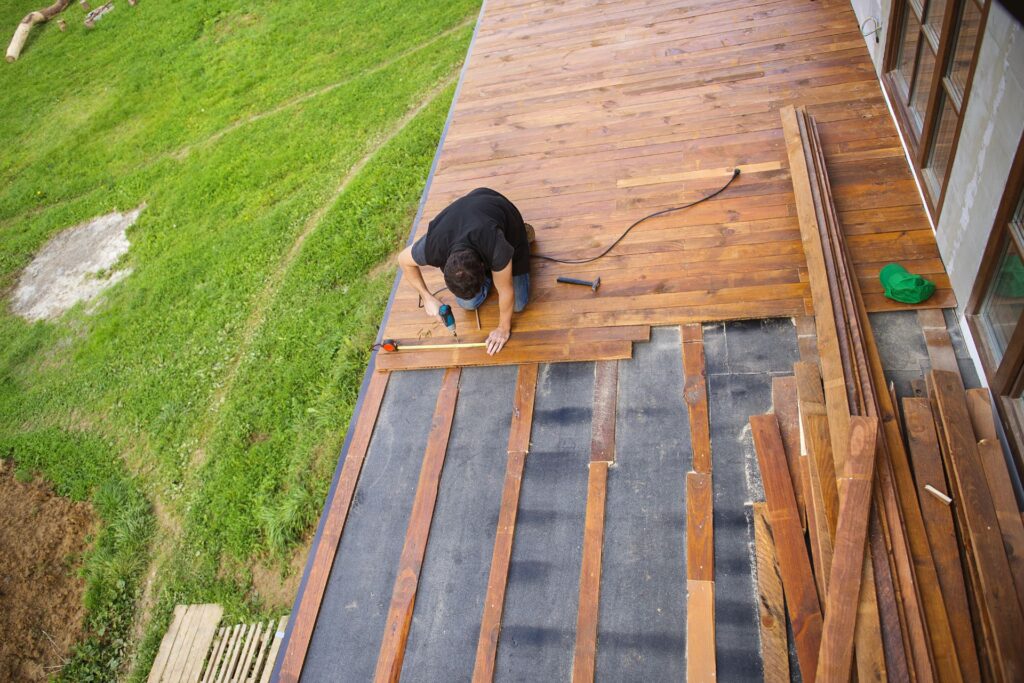
FAQs: About Cheapest Decking Timber NZ
Conclusion
In conclusion, this article has thoroughly explored the various aspects of choosing the cheapest decking timber in New Zealand. We’ve examined the types of affordable decking timber available, including pine, macrocarpa, and other cost-effective options. We’ve also delved into the benefits and drawbacks of each type, considering factors such as durability, maintenance, and aesthetic appeal. As we wrap up, it’s essential to remember that while cost is a significant factor, it’s not the only one to consider. The longevity, upkeep, and overall appearance of your deck are equally important. Therefore, it’s wise to weigh all these factors carefully before making a final decision. Investing in the right timber now can save you time and money in the long run, ensuring your deck remains a beautiful and functional outdoor space for years to come.
About the Author:
Mike Veail is a recognized digital marketing expert with over 6 years of experience in helping tradespeople and small businesses thrive online. A former quantity surveyor, Mike combines deep industry knowledge with hands-on expertise in SEO and Google Ads. His marketing strategies are tailored to the specific needs of the trades sector, helping businesses increase visibility and generate more leads through proven, ethical methods.
Mike has successfully partnered with numerous companies, establishing a track record of delivering measurable results. His work has been featured across various platforms that showcase his expertise in lead generation and online marketing for the trades sector.
Learn more about Mike's experience and services at https://theleadguy.online or follow him on social media:

